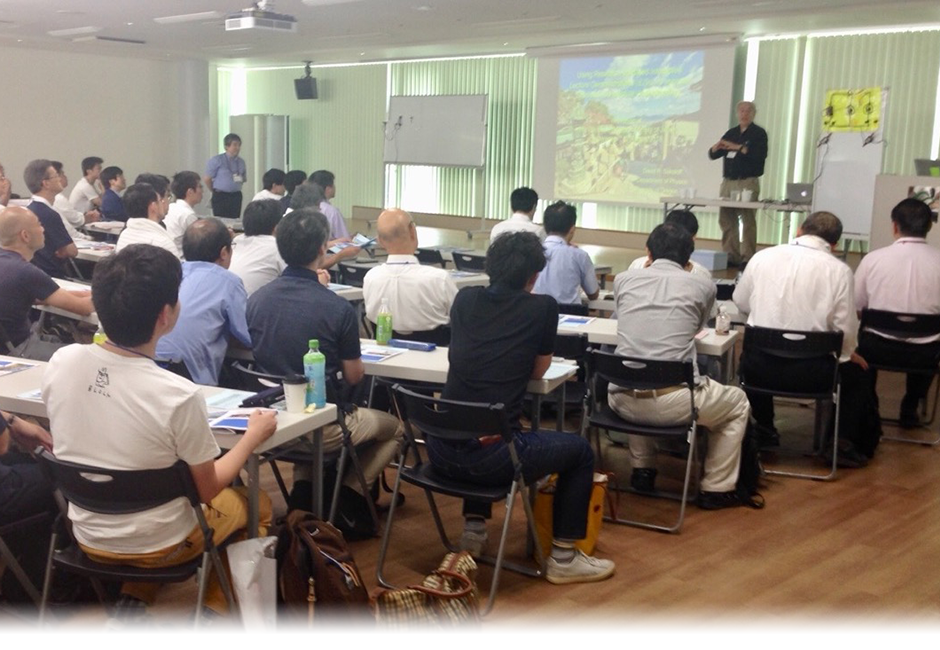
David Sokoloff presenting to over 150 participants in the ILD workshop at The Physics Education Society of Japan Conference, 8/12/18.
My Fulbright Story

David Sokoloff presenting to over 150 participants in the ILD workshop at The Physics Education Society of Japan Conference, 8/12/18.



Dr. David R. Sokoloff, Professor of Physics Emeritus at the University of Oregon, has been a researcher in physics education for the past 30 years. Currently, he is developing pedagogical materials, as well as conducting various types of workshops, to teach physics in both high schools and universities.
Unlike other Fulbright scholars, Dr. Sokoloff visited Japan in association with a project that was proposed by his hosts in Niigata University, as well as the Physical Society of Japan and other organizations, to conduct a series of workshops on physics pedagogy among university and secondary school faculty. His hosts were mainly interested in Interactive Lecture Demonstrations, which is a strategy developed by Dr. Sokoloff and his American colleagues, to conduct interactive and activity-based classroom lectures.
According to Dr. Sokoloff, the literature on physics education accumulated over the past 30 years reveals that the majority of students do not change their perspectives regarding physics after listening to lectures or reading textbooks. Hence, Dr. Sokoloff attempts to encourage his students to learn from their observations and compare their observations to their current beliefs regarding physics, so that the students can predict events happening in the physical world and compare their predictions to their observations. He says, “Physics education research has shown that students have many ideas in their heads. What they need to do is make predictions based on what they believe and then discover that, maybe, those predictions aren’t quite correct. Through this process, they can update their knowledge. They are behaving as scientists because they’re basing their knowledge on observations of the physical world.”
However, with respect to realizing Interactive Lecture Demonstrations, students must be willing to share their ideas among themselves. However, the Japanese culture makes it less acceptable for students to share their ideas with each other. Therefore, students often keep their ideas to themselves. This behavior made Dr. Sokoloff think about how teachers could encourage students’ willingness to share their ideas while asking them to make predictions.
Contrary to the aforementioned introversion shown by students, activity-based learning has recently achieved increasing popularity among Japanese teachers. Currently, efforts are underway to translate Dr. Sokoloff’s book on Interactive Lecture Demonstrations into Japanese so that it can be distributed among and used by Japanese educators.
Due to the careful scheduling performed by his hosts, Dr. Sokoloff, besides presenting a number of workshops at four locations in Japan, also had many opportunities to spend leisure time with his project colleagues. In each of the places where Dr. Sokoloff presented his lectures, he had at least one dinner together with his colleagues, which gave them ample time to sit down and discuss topics on not only physics and physics education but also culture.
Dr. Sokoloff recalls, “For me, cross-cultural communication was the most valuable aspect, besides exchanging ideas on education with people whom I was working with. The most interesting thing to me was meeting people in informal settings to discuss all kinds of things, rather than topics limited to education. It gave me an opportunity not only to know about the Japanese culture but also to give them a few opportunities to learn more about the American culture. I felt like that was the nicest way to understand each other.”
Further, Dr. Sokoloff’s feedback on those fruitful mingling opportunities was fairly positive: “I think I became much more self-confident about working in a foreign culture. It also had to do with the fact that in the places where I visited as part of my Fulbright fellowship, the people were so supportive toward me and friendly and helpful that I just felt I should have no worries and fears about being and working there.”
As a Fulbright alumnus, Dr. Sokoloff highly recommends the program to future Fulbright candidates. According to him, “It’s a remarkable opportunity to join the Fulbright Specialist Program, which enables you to share your expertise and interact with many different people in a country for 2 to 6 weeks. This is nothing but a beneficial opportunity.”